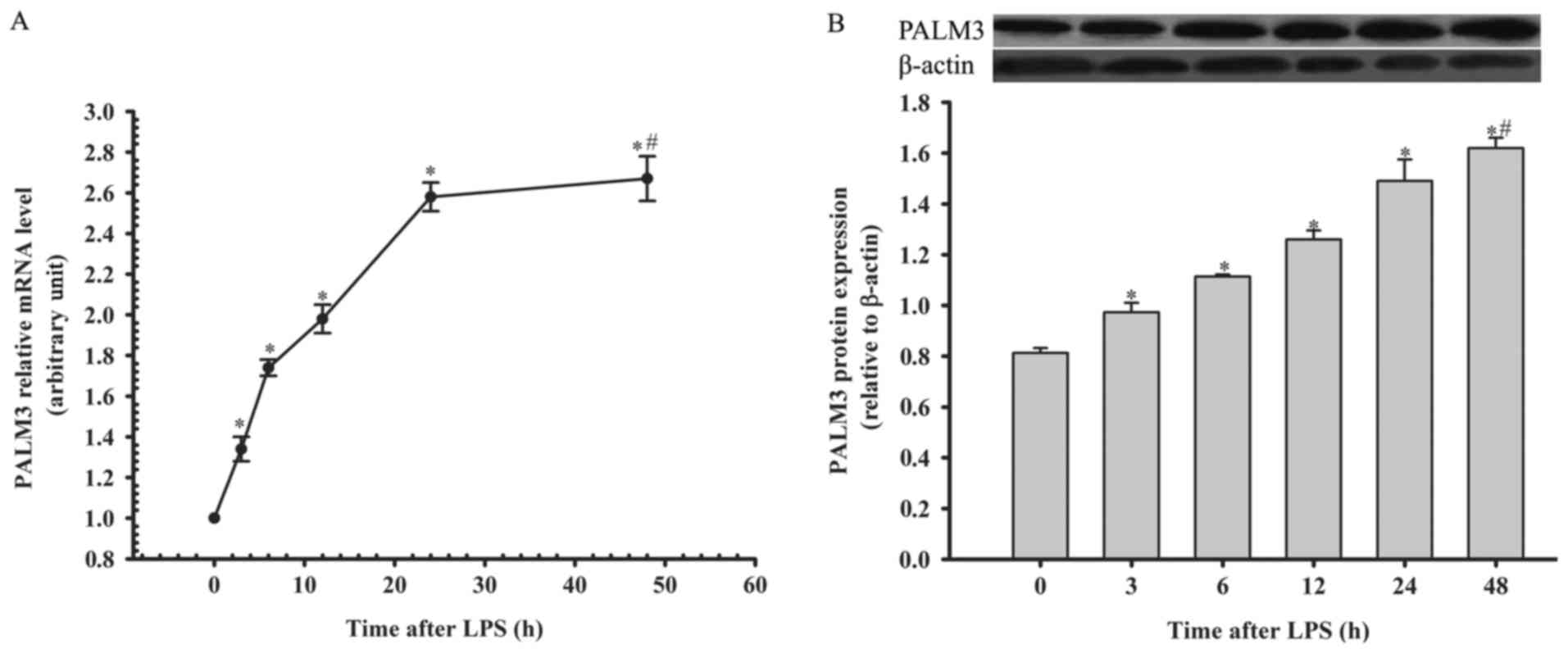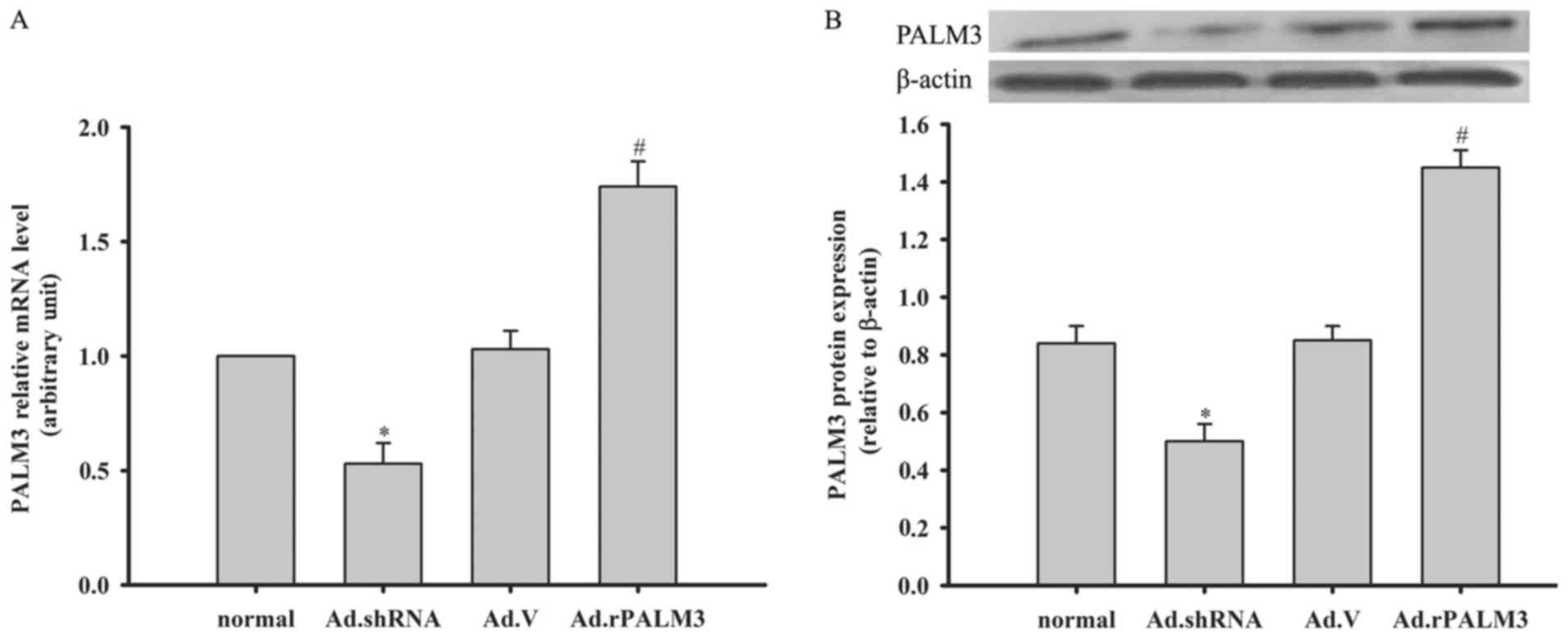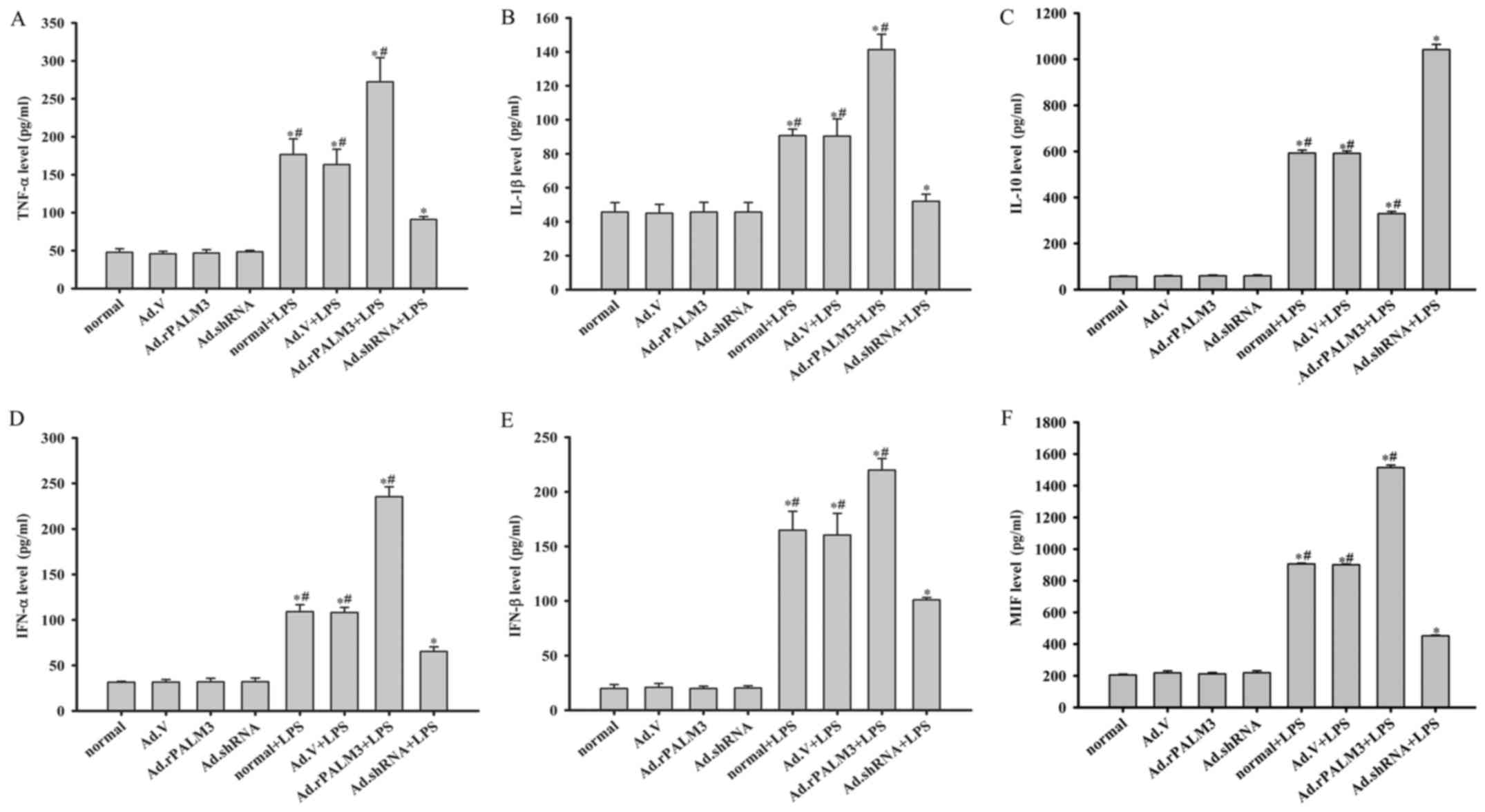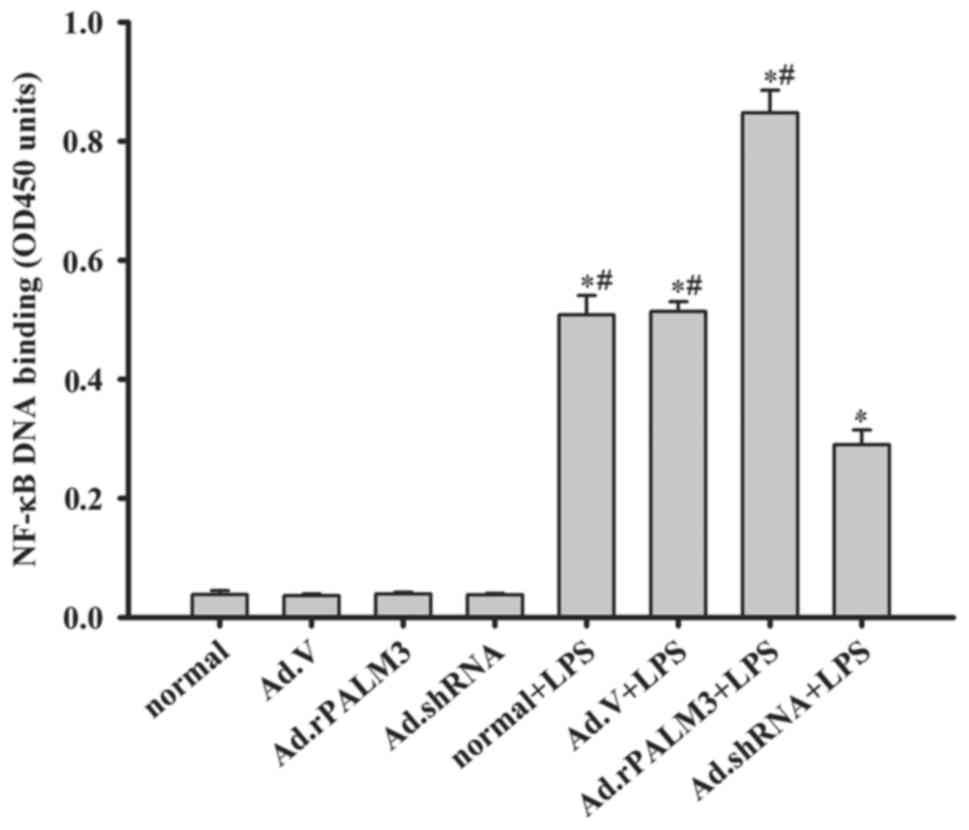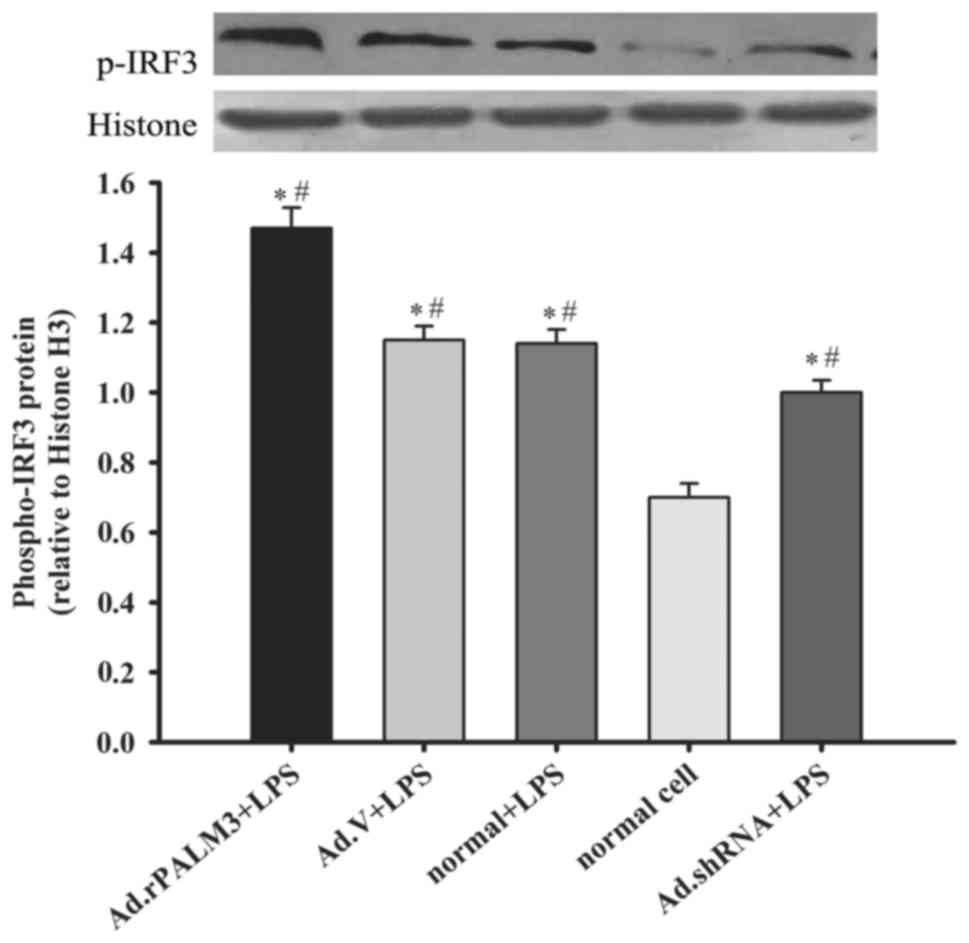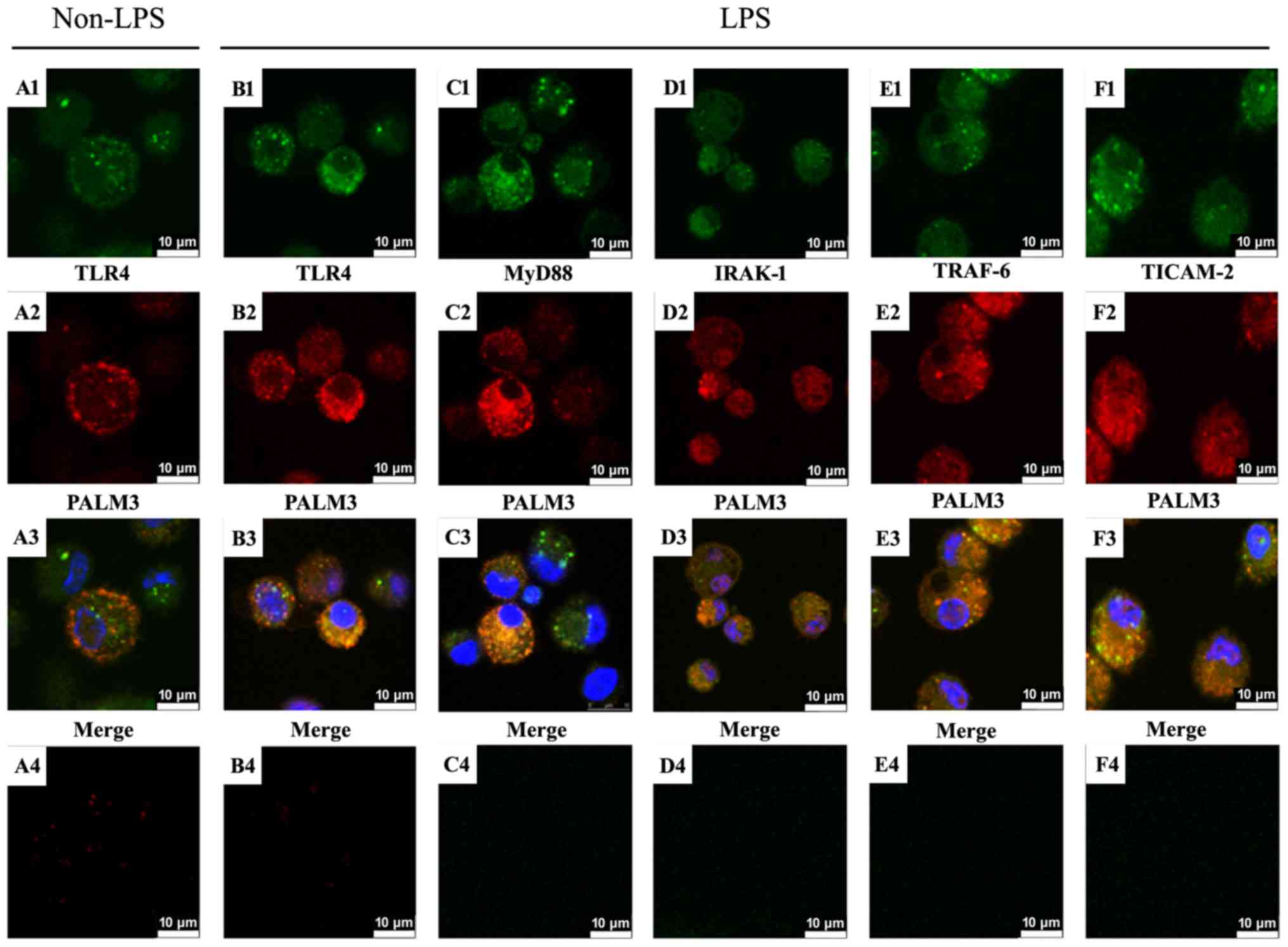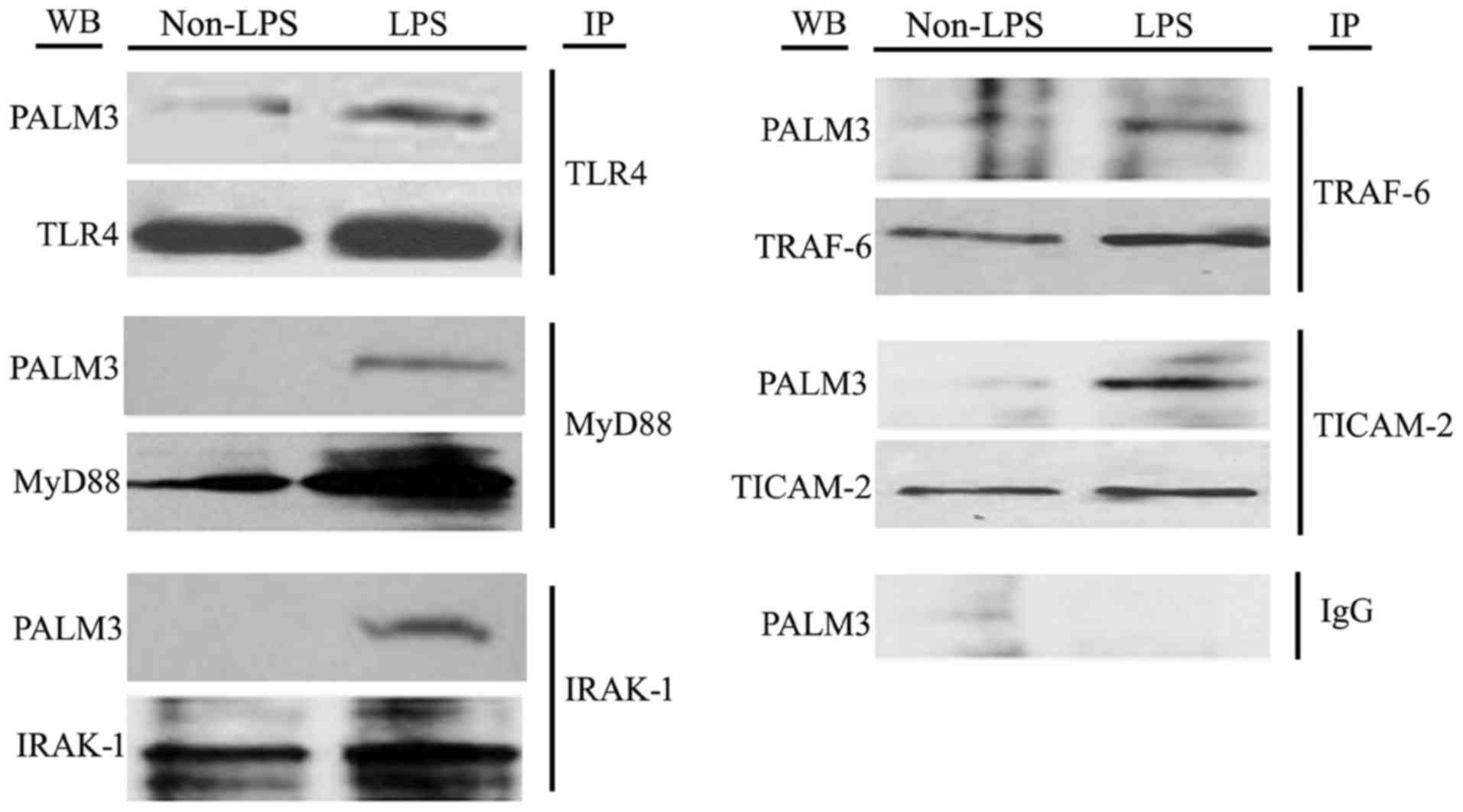|
1
|
Wang Q, Wang J, Hu M, Yang Y, Guo L and Xu
J, Lei C, Jiao Y and Xu J: Uncoupling protein 2 increases
susceptibility to lipopolysaccharide-induced acute lung injury in
mice. Mediators Inflamm. 2016:91542302016. View Article : Google Scholar : PubMed/NCBI
|
|
2
|
Wang Q, Zheng X, Cheng Y, Zhang YL, Wen
HX, Tao Z, Li H, Hao Y, Gao Y, Yang LM, et al: Resolvin D1
stimulates alveolar fluid clearance through alveolar epithelial
sodium channel, Na,K-ATPase via ALX/cAMP/PI3K pathway in
lipopolysaccharide-induced acute lung injury. J Immunol.
192:3765–3777. 2014. View Article : Google Scholar : PubMed/NCBI
|
|
3
|
Zhu T, Wang DX, Zhang W, Liao XQ, Guan X,
Bo H, Sun JY, Huang NW, He J, Zhang YK, et al: Andrographolide
protects against LPS-induced acute lung injury by inactivation of
NF-κB. PLoS One. 8:e564072013. View Article : Google Scholar
|
|
4
|
Han J, Li C, Liu H, Fen D, Hu W, Liu Y,
Guan C and Luo ZQ: Inhibition of lipopolysaccharide-mediated rat
alveolar macrophage activation in vitro by antiflammin-1. Cell Biol
Int. 32:1108–1115. 2008. View Article : Google Scholar : PubMed/NCBI
|
|
5
|
Wu DD, Pan PH, Liu B, Su XL, Zhang LM, Tan
HY, Cao Z, Zhou ZR, Li HT, Li HS, et al: Inhibition of alveolar
macrophage pyroptosis reduces lipopolysaccharide-induced acute lung
injury in mice. Chin Med J (Engl). 128:2638–2645. 2015. View Article : Google Scholar
|
|
6
|
Johnston LK, Rims CR, Gill SE, McGuire JK
and Manicone AM: Pulmonary macrophage subpopulations in the
induction and resolution of acute lung injury. Am J Respir Cell Mol
Biol. 47:417–426. 2012. View Article : Google Scholar : PubMed/NCBI
|
|
7
|
Aggarwal NR, King LS and D'Alessio FR:
Diverse macrophage populations mediate acute lung inflammation and
resolution. Am J Physiol Lung Cell Mol Physiol. 306:L709–L725.
2014. View Article : Google Scholar : PubMed/NCBI
|
|
8
|
Dagvadorj J, Shimada K, Chen S, Jones HD,
Tumurkhuu G, Zhang W, Wawrowsky KA, Crother TR and Arditi M:
Lipopolysaccharide induces alveolar macrophage necrosis via CD14
and the P2X7 receptor leading to interleukin-1α release. Immunity.
42:640–653. 2015. View Article : Google Scholar : PubMed/NCBI
|
|
9
|
Takashima K, Matsushima M, Hashimoto K,
Nose H, Sato M, Hashimoto N, Hasegawa Y and Kawabe T: Protective
effects of intratracheally administered quercetin on
lipopolysaccharide-induced acute lung injury. Respir Res.
15:1502014. View Article : Google Scholar : PubMed/NCBI
|
|
10
|
Xi F, Liu Y, Wang X, Kong W and Zhao F:
LYATK1 potently inhibits LPS-mediated pro-inflammatory response.
Biochem Biophys Res Commun. 470:1–8. 2016. View Article : Google Scholar
|
|
11
|
Molteni M, Gemma S and Rossetti C: The
role of Toll-like receptor 4 in infectious and noninfectious
inflammation. Mediators Inflamm. 2016:69789362016. View Article : Google Scholar : PubMed/NCBI
|
|
12
|
Bordon Y: Inflammation: TNF snuffs out
steroids. Nat Rev Immunol. 14:2142014.PubMed/NCBI
|
|
13
|
Cornish JA, Kloc M, Decker GL, Reddy BA
and Etkin LD: Xlcaax-1 is localized to the basolateral membrane of
kidney tubule and other polarized epithelia during Xenopus
development. Dev Biol. 150:108–120. 1992. View Article : Google Scholar : PubMed/NCBI
|
|
14
|
Hu B, Petrasch-Parwez E, Laue MM and
Kilimann MW: Molecular characterization and immunohistochemical
localization of palmdelphin, a cytosolic isoform of the paralemmin
protein family implicated in membrane dynamics. Eur J Cell Biol.
84:853–866. 2005. View Article : Google Scholar : PubMed/NCBI
|
|
15
|
Kutzleb C, Sanders G, Yamamoto R, Wang X,
Lichte B, Petrasch-Parwez E and Kilimann MW: Paralemmin, a
prenyl-palmitoyl-anchored phosphoprotein abundant in neurons and
implicated in plasma membrane dynamics and cell process formation.
J Cell Biol. 143:795–813. 1998. View Article : Google Scholar : PubMed/NCBI
|
|
16
|
Albrecht I, Bieri R, Leu A, Granacher P,
Hagmann J, Kilimann MW and Christofori G: Paralemmin-1 is expressed
in lymphatic endothelial cells and modulates cell migration, cell
maturation and tumor lymphangiogenesis. Angiogenesis. 16:795–807.
2013. View Article : Google Scholar : PubMed/NCBI
|
|
17
|
Turk CM, Fagan-Solis KD, Williams KE,
Gozgit JM, Smith-Schneider S, Marconi SA, Otis CN, Crisi GM,
Anderton DL, Kilimann MW, et al: Paralemmin-1 is over-expressed in
estrogen-receptor positive breast cancers. Cancer Cell Int.
12:172012. View Article : Google Scholar : PubMed/NCBI
|
|
18
|
Kutzleb C, Petrasch-Parwez E and Kilimann
MW: Cellular and subcellular localization of paralemmin-1, a
protein involved in cell shape control, in the rat brain, adrenal
gland and kidney. Histochem Cell Biol. 127:13–30. 2007. View Article : Google Scholar
|
|
19
|
Chen X, Wu X, Zhao Y, Wang G, Feng J, Li Q
and Qian G: A novel binding protein of single immunoglobulin IL-1
receptor-related molecule: Paralemmin-3. Biochem Biophys Res
Commun. 404:1029–1033. 2011. View Article : Google Scholar
|
|
20
|
Li S, Guo L, Zhao Y, Qian P, Lv X, Qian L,
Wang Q, Qian G, Yao W and Wu X: Silencing of paralemmin-3 protects
mice from lipopolysaccharide-induced acute lung injury. Peptides.
76:65–72. 2016. View Article : Google Scholar : PubMed/NCBI
|
|
21
|
Livak KJ and Schmittgen TD: Analysis of
relative gene expression data using real-time quantitative PCR and
the 2(−Delta Delta C(T)) Method. Methods. 25:402–408. 2001.
View Article : Google Scholar
|
|
22
|
Rao R, Nagarkatti P and Nagarkatti M: Role
of miRNA in the regulation of inflammatory genes in staphylococcal
enterotoxin B-induced acute inflammatory lung injury and mortality.
Toxicol Sci. 144:284–297. 2015. View Article : Google Scholar : PubMed/NCBI
|
|
23
|
Liu LM, Tu WJ, Zhu T, Wang XT, Tan ZL,
Zhong H, Gao DY and Liang DY: IRF3 is an important molecule in the
UII/UT system and mediates immune inflammatory injury in acute
liver failure. Oncotarget. 7:49027–49041. 2016. View Article : Google Scholar : PubMed/NCBI
|
|
24
|
Qi T, Xu F, Yan X, Li S and Li H:
Sulforaphane exerts anti-inflammatory effects against
lipopolysaccharide-induced acute lung injury in mice through the
Nrf2/ARE pathway. Int J Mol Med. 37:182–188. 2016. View Article : Google Scholar
|
|
25
|
Sugiyama K, Muroi M, Kinoshita M, Hamada
O, Minai Y, Sugita-Konishi Y, Kamata Y and Tanamoto K: NF-κB
activation via MyD88-dependent Toll-like receptor signaling is
inhibited by trichothecene mycotoxin deoxynivalenol. J Toxicol Sci.
41:273–279. 2016. View Article : Google Scholar : PubMed/NCBI
|
|
26
|
Fernandez-Bustamante A, Agazio A, Wilson
P, Elkins N, Domaleski L, He Q, Baer KA, Moss AF, Wischmeyer PE and
Repine JE: Brief glutamine pretreatment increases alveolar
macrophage CD163/heme oxygenase-1/p38-MAPK dephosphorylation
pathway and decreases capillary damage but not neutrophil
recruitment in IL-1/LPS-insufflated rats. PLoS One.
10:e01307642015. View Article : Google Scholar : PubMed/NCBI
|
|
27
|
Shan Y, Lin N, Yang X, Tan J, Zhao R, Dong
S and Wang S: Sulphoraphane inhibited the expressions of
intercellular adhesion molecule-1 and vascular cell adhesion
molecule-1 through MyD88-dependent toll-like receptor-4 pathway in
cultured endothelial cells. Nutr Metab Cardiovasc Dis. 22:215–222.
2012. View Article : Google Scholar
|
|
28
|
Van Linthout S, Spillmann F, Graiani G,
Miteva K, Peng J, Van Craeyveld E, Meloni M, Tölle M, Escher F,
Subasigüller A, et al: Down-regulation of endothelial TLR4
signalling after apo A-I gene transfer contributes to improved
survival in an experimental model of lipopolysaccharide-induced
inflammation. J Mol Med (Berl). 89:151–160. 2011. View Article : Google Scholar
|
|
29
|
Safari-Alighiarloo N, Taghizadeh M,
Rezaei-Tavirani M, Goliaei B and Peyvandi AA: Protein-protein
interaction networks (PPI) and complex diseases. Gastroenterol
Hepatol Bed Bench. 7:17–31. 2014.PubMed/NCBI
|
|
30
|
Oshiumi H, Sasai M, Shida K, Fujita T,
Matsumoto M and Seya T: TIR-containing adapter molecule (TICAM)-2,
a bridging adapter recruiting to toll-like receptor 4 TICAM-1 that
induces interferon-beta. J Biol Chem. 278:49751–49762. 2003.
View Article : Google Scholar : PubMed/NCBI
|
|
31
|
Wald D, Qin J, Zhao Z, Qian Y, Naramura M,
Tian L, Towne J, Sims JE, Stark GR and Li X: SIGIRR, a negative
regulator of Toll-like receptor-interleukin 1 receptor signaling.
Nat Immunol. 4:920–927. 2003. View
Article : Google Scholar : PubMed/NCBI
|



